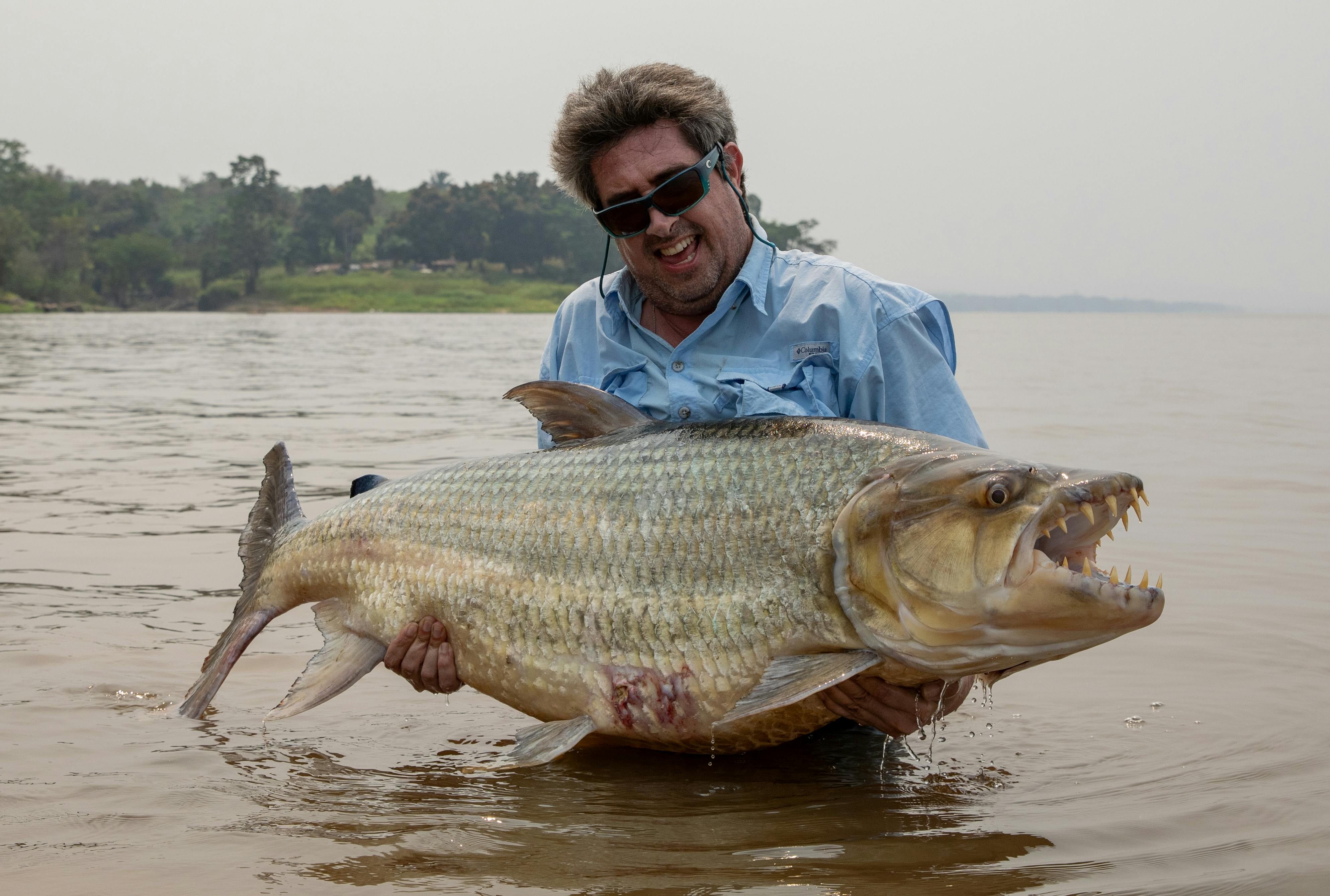
My Quest For A PB Goliath Tigerfish - Gary Newman
New tactics, a bit of luck, and a lot of patience—would change everything as I look to catch a massive goliath tigerfish on the Congo River.
A big goliath tigerfish had been at the top of my ‘wanted’ list, in terms of fish species from around the world, for many years, and although I’d caught them on my previous two trips to the Congo, I hadn’t had one of the sort of size I really wanted.
My target was to get a goliath of over 50lb from the Congo River, which would also make it my twentieth different species of freshwater fish over that weight. Still, the dream for me was that maybe one day I’d get an absolute monster over 30kg, or 66lbs. Given that my best to date was only 22lb, I knew that if I could land a couple on my latest trip, I’d have a good chance of beating that at least.
Goliath tigerfish aren’t plentiful in the river, and even less so when it comes to the bigger ones, and many hours can pass between bites. They also have a reputation for being very hard to hook, and even when you do connect with one, keeping it on the hooks isn’t easy.
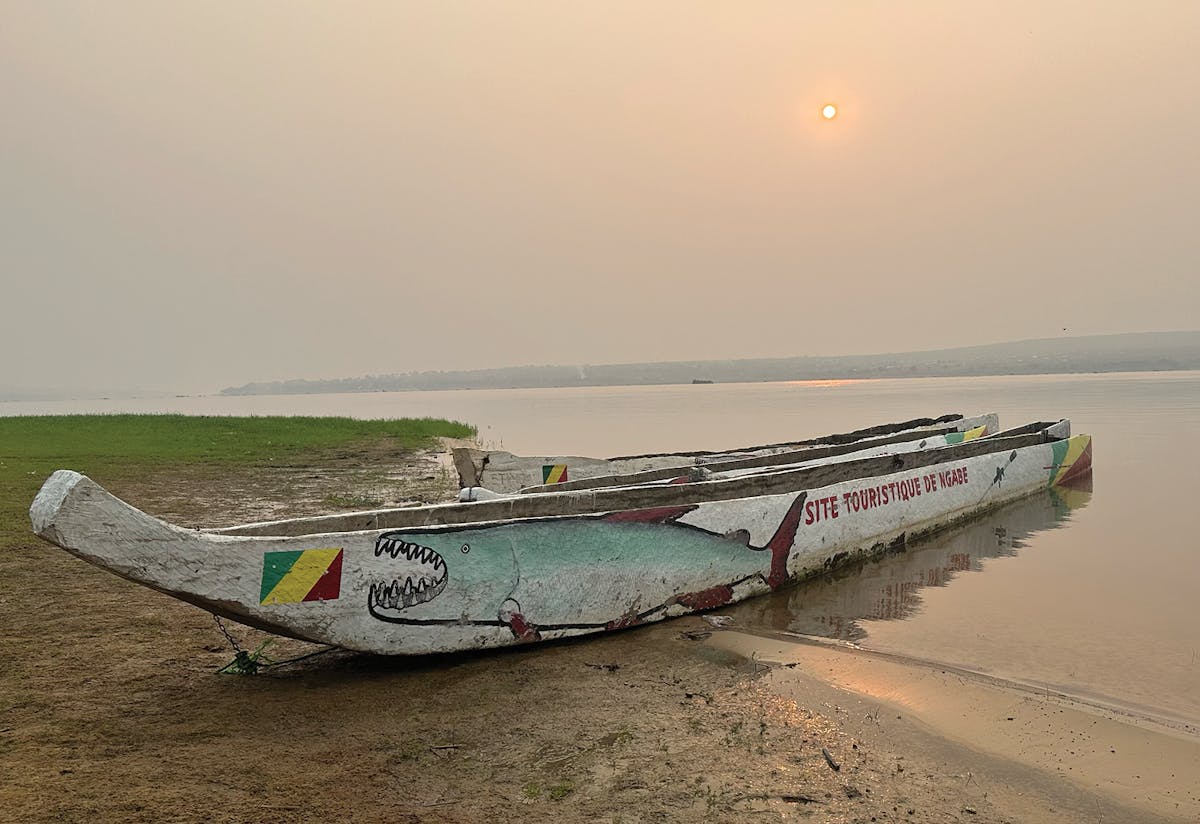
On my first two trips, I’d fished traditionally, with a string of trebles on a wire trace, and including a ‘stinger’ hook trailing ten inches or so behind the bait. But I hated this set-up and the fact that the trailing hook is basically designed to try and snag them anywhere it takes a hold.
So, for this latest trip, I decided to completely do my own thing – as I usually do – and after thinking about rigs, I opted for something different, with two treble hooks and a large single, all on separate pieces of wire coming back to a solid ring, plus an up trace of around 4ft.
I think I’d have a better chance of a hook-up and also of a fish staying on if each hook were working independently and not in a chain of hooks.
A lot of my fishing overseas these days – certainly for catfish species, Nile perch and similar – is all done with circle hooks. Although I’m not convinced these are great for tigerfish, given that the trace could exit between teeth and prevent the hook from turning properly. You’re also relying on the fish swallowing the bait. I decided to rig my baits in the same way as I do with a circle rig set-up.
Most of the bait fish you are using – either live or dead – have very tough skin, meaning it is hard to strike a hook through it (it is bad enough trying to just take the bait off the hooks yourself). Hence, these days I always tie my baits on with a piece of braid.

So I decided to attach the single hook via a loop of braid threaded through the eye socket of the bait with a baiting needle, and all of the force of the cast would be taken there. The second hook, a treble, was nicked really lightly through the skin, so it would tear out very easily. The lower hook was attached via a piece of braid threaded through the fish near the tail root, so that the treble hung completely free.
In hindsight, I’m not sure why I hadn’t used this sort of rig sooner, and it just goes to show why you should go with your instincts rather than copying what apparently is the ‘right’ way to fish for something.
I couldn’t wait to actually try it and see if it worked. Still, my trip got off to the worst possible start when my boat partner Carl and I arrived in Brazzaville. Still, AirFrance had managed to leave all of our luggage in Paris, and so we were delayed sitting around in the hotel for 24 hours longer than planned. At least we still had 12 days of fishing ahead of us, even with the delay.
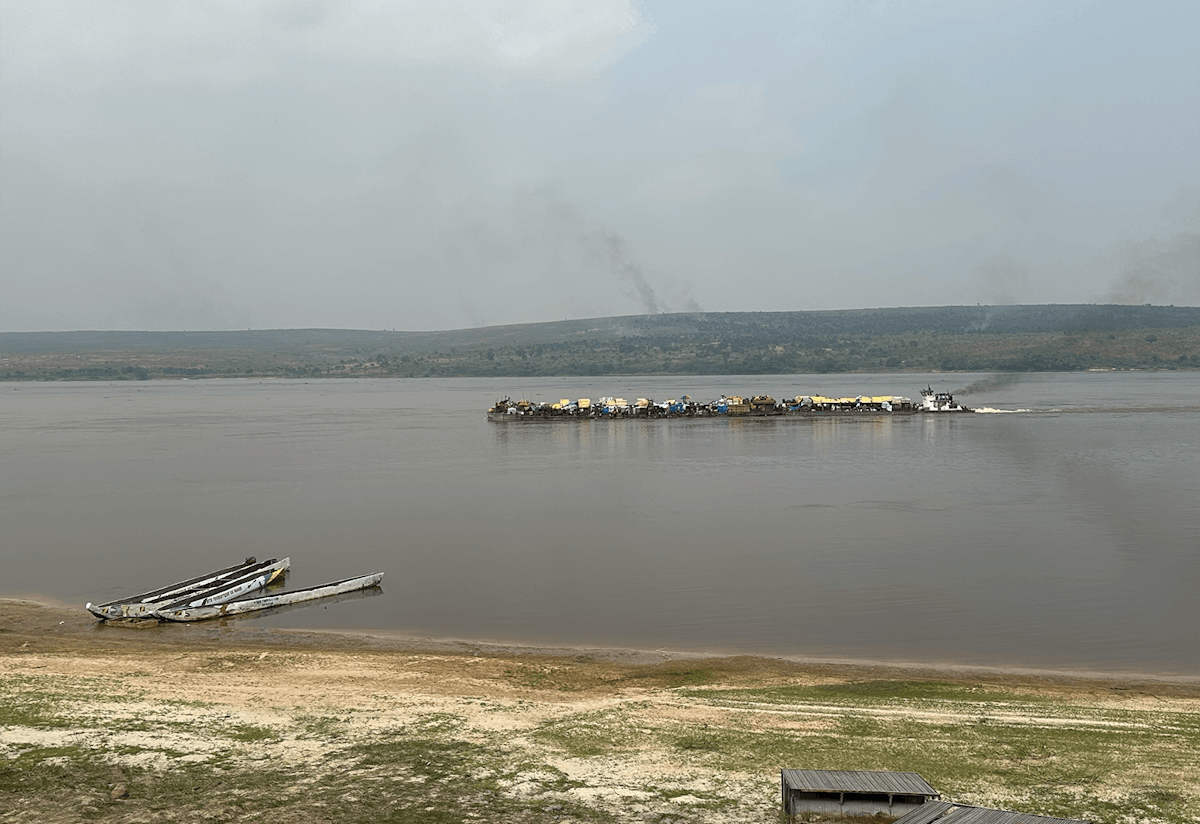
Finally, we arrived at the lodge, after a 3.5-hour drive from the city, and I spent the rest of the day getting my gear ready. I couldn’t wait to get back out on the river.
The first day saw a tiny goliath of around 3kg hit my bait, but it didn’t hook up, which I expected given the size of the bait I was using. On the second morning, after casting a bait into a back eddy as we drifted past – all of the fishing we do is on the drift, casting and trotting baits to likely looking areas, and fishing them a couple of metres or so deep underneath a float – I had a take from another small fish. This time, somehow, it managed to get hooked, but as it came over the net, it flipped back out and fell off.
It was a good sign getting some action, but these weren’t the size of goliath that I wanted and were just wasting good baits.
The afternoon we ended up in one of my favourite spots on this section of the river, as it has some exciting current lines and eddies.
I was using quite a large bait and dropped it next to the boat, where I could see that the flow would take it away from me. It had barely got past the end of the boat when the float was pulled underwater violently. The fish started to strip line from the reel, at which point I closed the bail arm and struck hard a couple of times to try to set the hooks.
My strikes were met with hefty resistance, and the fish didn’t jump – as most of the small and medium-sized ones do when you set the hooks – and I had a fair idea that I was attached to something special.
It ran straight under the boat, and I had to quickly back off my drag and plunge the tip of my rod as far underwater as I could, whilst I made my way to the front of the boat and could regain direct contact. The rest of the fight was uneventful after that first run, but it felt heavy all the way in. Then once it was under the rod tip, it plodded around and held its ground – I use quite heavy gear, with a 100-300g 10ft rod and 48kg braided main line, to a 100lb mono leader.
Finally, it started to rise to the surface. My float came out of the water first, and was quickly followed by a giant goliath, which thankfully behaved itself and went in the net the first time.
We were close to the bank, so we quickly motored to shore, where it would be easier to deal with the fish, and after giving it a brief rest in the water, we weighed it at 74lb – a dream come true for me to have caught one of that size and right at the start of the trip! Better still, it was hooked really well, with the single and one treble, both in the mouth, and that gave me a lot of confidence in the rig.

After a few quick photos in the water, I was keen to get it back, as although this species is fearsome, they are also very fragile. Sadly, some people don’t even try and just kill all the ones they catch. After five minutes or so of holding it facing into the flow, it had totally regained its strength. I was happy to let it go and watch it swim off back into the depths of the vast Congo River.
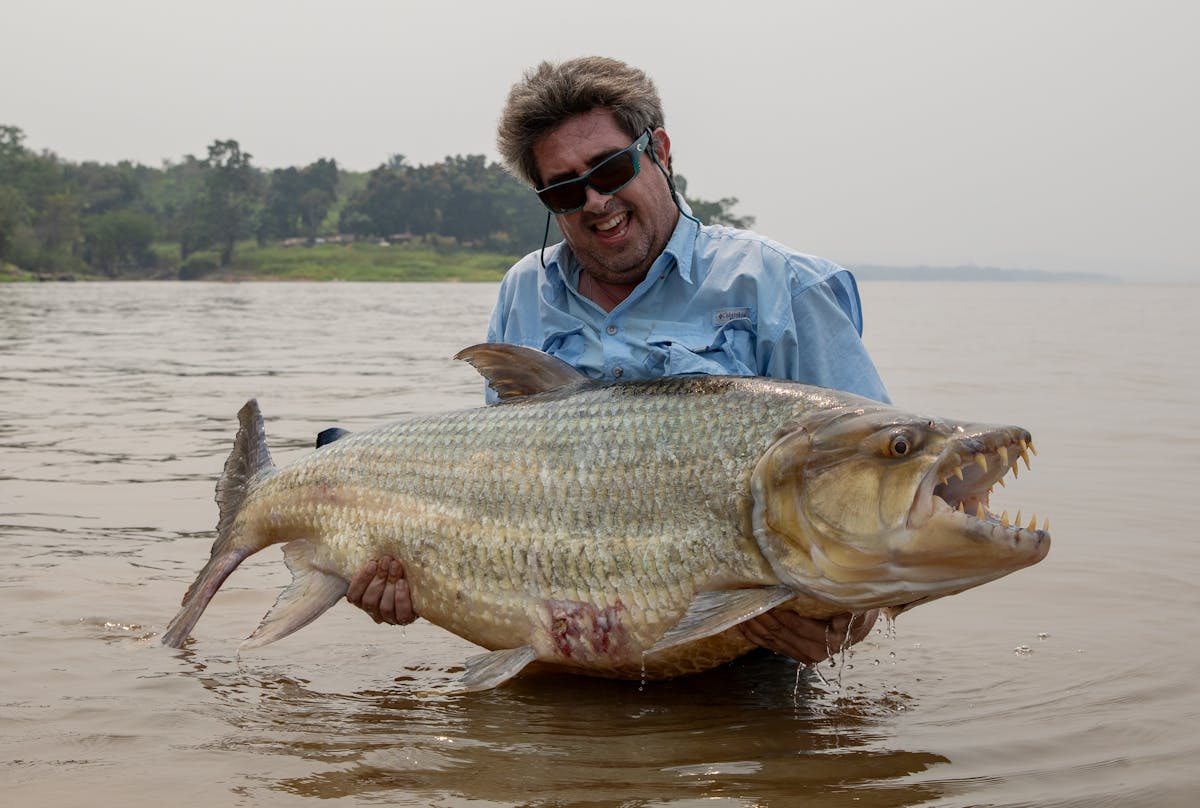
That fish alone would have made my trip. Still, a couple of days later we were back in the same area, and this time I’d trotted a bait 80m or so down to the edge of an eddy that I liked the look of. As I stopped my bait and held it there I was even half expecting it to be taken. But it was still a bit of a shock when, less than a minute later, something smashed into it hard and started to strip line, and as I struck into it, the fish came half out of the water. It looked big even at that distance, so I know I was attached to another monster.
This fish fought much harder, making several more runs in the strong current, but 5 or 6 minutes later, I finally had it alongside the boat. As it surfaced from the murky depths, I could see it was another perfect fish, which thankfully went in the net.
At 63lb, it was slightly smaller, but still would have been enough to make my trip even without the bigger one I’d already caught. Once again, after a few photos, it swam off very strongly. Once again, it was nicely hooked in the mouth, with a single and one treble.
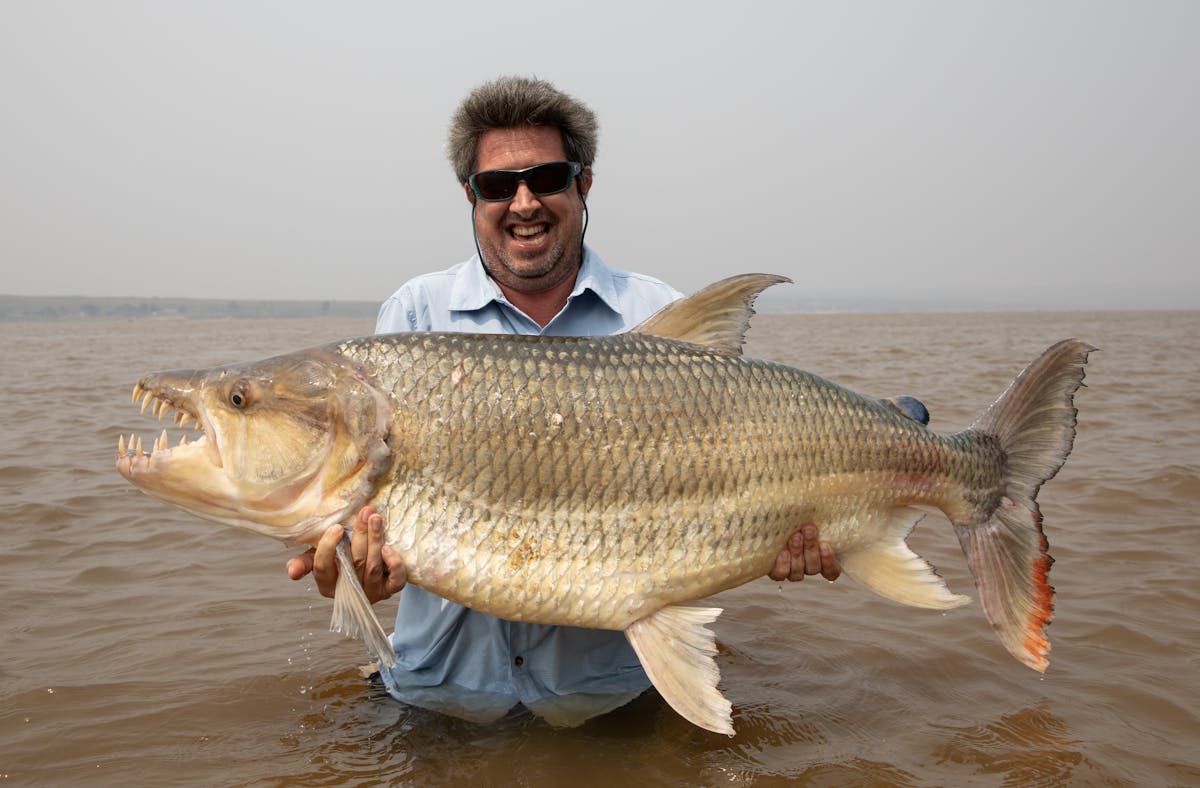
Half the village had come out to see it, as I’d hooked it right in front of them, and they were a bit disappointed to see me release it, as they view these fish as food. But after I gave them some money, they were pleased and all started cheering, so in the end we were all happy. These big tigerfish aren’t common and need protecting as much as possible.
By this point, I was feeling a bit guilty as my boat partner had only had one fish of around 7kg, and I was making sure that I left all the best-looking water for him to cover.
But as is often the way, on day five we were in a great looking area. He was fishing the current line, whilst I kept my bait out of the way and just a couple of rod lengths from the boat, when suddenly it was smashed hard. I found myself connected to another decent fish which had hooked itself – I didn’t even get a chance to strike!
After a short fight, this one was also netted – unlike in the past, where I almost expected every fish to fall off, having lost quite a few, with my new set-up the thought didn’t even enter my mind – and although not as big as the other two it was still a very nice fish of 43lb.
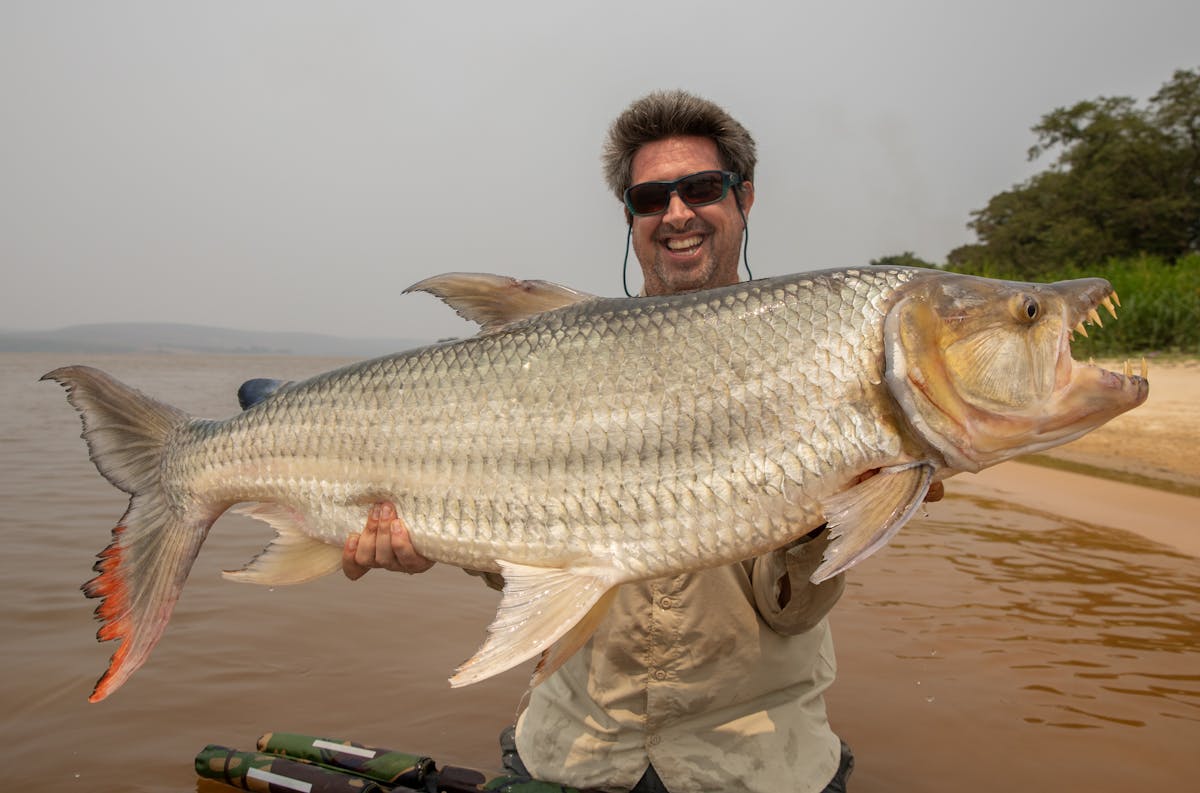
That turned out to be my last fish of the trip, as they just seemed to suddenly switch off, which wasn’t unexpected after a run of action like that. Still, I was thrilled to have had three chances from good fish and hooked and landed all of them.
My rig changes definitely helped, but you still need a large slice of luck as well to get a bite from a big goliath in the first place.
Although I’ve now achieved my target in terms of getting one over 30kg – my biggest one was nearly 34kg – I love the river, as it is so big and vast, and a crazy place to fish, so I will definitely be going back for another go.
A big thanks to Boroma Fishing and Mbenga Camp, all the staff at Ngabe lodge where we were based, my local guide Elor, and of course my boat partner Carl, who managed to put up with me for 12 days (it was the first time we’d met)!
Related articles

Barbel and chub fishing on the River Thames - Gary Newman
Gary explains the tactics and tackle that he uses

Fishing Across the World: Gary's Biggest Year Yet
Gary Newman summarises an epic 2024, including giant catfish, great tench, and a 118lb

"My biggest brace of barbel" - Gary Newman
Fishing on the Thames led to two stunning barbel catches and a 30lb+ brace of barbel!
Related news

The Fishing Gurus Live Audience Podcast - Christmas Special
24.10.2025
Matt Godfrey and special guests are back for a LIVE Christmas Special!

Guru Feeder Cup 25/26
24.10.2025
An awesome series of matches that lead to one lucky winner! Pick your qualifier and enter

Kiveton Over 50s Autumn Festival 2025
27.10.2025
Find out more and get tickets for this fantastic 2-day event - 29th & 30th of October
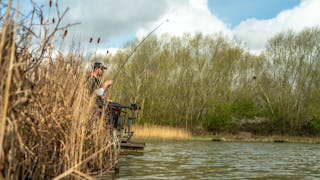
Kiveton Silverfish Festival 2025
27.10.2025
Back this November with a Top prize up to £1500 for the winner!

